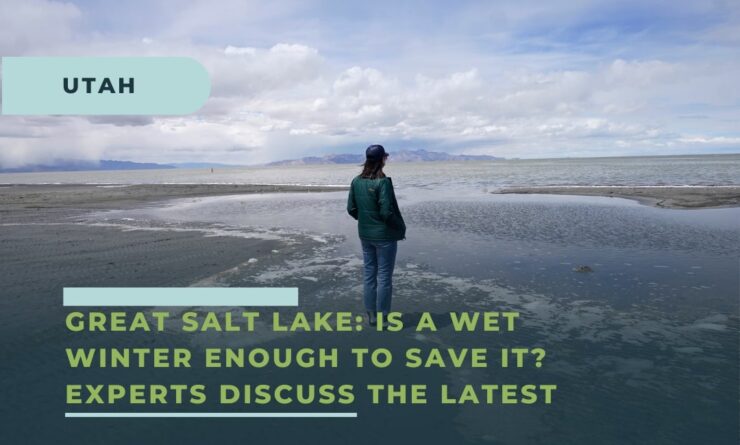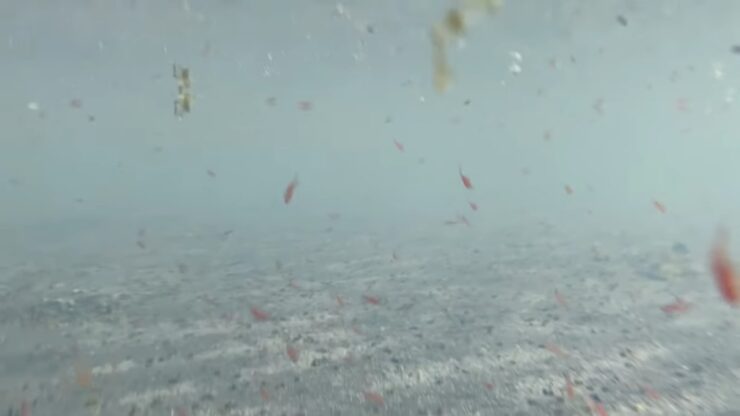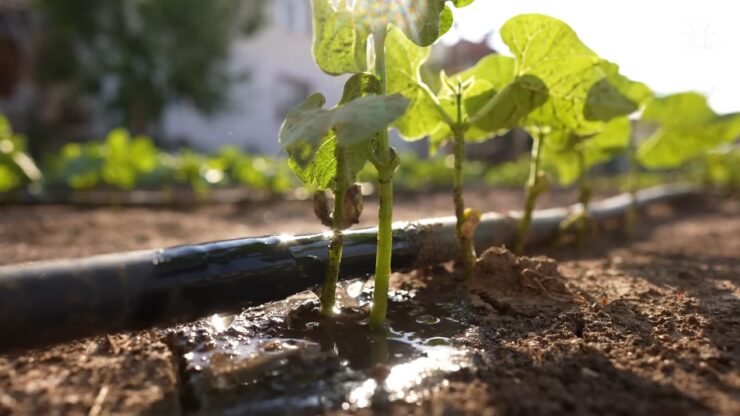Several months after experts startlingly predicted that the Great Salt Lake could dry up within five years, nature provided a surprising reprieve: the largest recorded snowpack in Utah’s history.
The melted snow has already raised the lake’s water levels by four feet since the historical low last fall, compared to just a foot the previous spring. However, experts caution that this is only a temporary relief for an ongoing long-term drought exacerbated by overuse of water resources.
“This extends the situation by another year or two. It doesn’t resolve the issue, but it offers us the time we need to implement comprehensive solutions,” said Benjamin Abbott, a professor of ecosystem ecology at Brigham Young University in Provo, Utah. “We must use this gift wisely.”
Table of Contents
ToggleIs the Great Salt Lake drying up?
Yes, for two reasons.
First, due to increased water consumption by farmers and residents, the lake has received less than a third of its natural streamflow over the past three years. Last year, the lake’s surface reached a record low elevation of 4,188 feet above sea level, as it is not being replenished by rivers. The water meant to flow into the lake is being used for agriculture or watering lawns instead. The Salt Lake City area is among the fastest-growing metropolitan regions in the nation.
Second, climate change is causing hotter summers in the Salt Lake City area, which leads to increased evaporation in the lake. The lower the lake’s water levels, the faster it evaporates. Additionally, in more typical years, precipitation falls as rain instead of snow, causing faster runoff and less recharge for underground aquifers.
“We’re still in a megadrought, and we cannot be complacent,” said Lynn de Freitas, executive director of the nonprofit Friends of Great Salt Lake.
What are the consequences of the Great Salt Lake drying up?
While the lake’s water is too saline for irrigation or drinking, its high salt content supports brine shrimp populations. Brine shrimp harvesting for commercial fish food generates thousands of jobs and over $1.5 billion in annual revenue.
Brine shrimp also serve as a crucial food source for migratory birds. If water levels drop too low and salt concentrations become too high, the entire system could collapse. Additionally, decreasing water levels result in shrinking shorelines, increasing competition for space.
“It’s vital to have this remarkable winter to help address some of the water challenges we’re facing,” said Marcelle Shoop, director of the National Audubon Society’s Saline Lake program. Rising lake levels are crucial for the millions of migratory birds that rely on the lake, Shoop said.
“However, we still have our work cut out for us in terms of addressing the long-term challenges facing the Great Salt Lake. We must continue to reduce our water consumption and find ways to balance the needs of the environment and people,” she added.
Moreover, the lakebed contains hazardous minerals that are dangerous to inhale. As the lake has receded, massive dust storms have periodically engulfed Salt Lake City.
“It’s not a pretty sight – it’s full of heavy metals,” de Freitas said.
What has recently been done to help the Great Salt Lake?
The Church of Jesus Christ of Latter-day Saints made headlines earlier this year when it pledged to donate 20,000 acre-feet of water annually to support the lake.
Although it’s a small contribution, it’s an important move that could inspire other major water users to make similar donations or cutbacks, experts say.
What are the long-term solutions?
Approximately 80% of the Salt Lake’s decline is due to irrigation, according to Abbott, meaning agriculture must play a role in reversing the trend.
Most of the irrigated farmland in Utah grows alfalfa or other pasture crops, which are used to feed beef cattle. Abbott believes that water users across Utah need to develop a plan to consume less water so that more can flow into the lake.
“We’re extracting more water from the system than is sustainably available,” he said. “Over time, we deplete the bank account.”
Implementing water-saving technologies and practices in agriculture, as well as encouraging urban residents to use water more efficiently, can help address the issue. This may involve adopting drought-tolerant landscaping, using water-saving appliances, and implementing water reuse systems.
In addition, policymakers and water managers must work together to create a comprehensive, long-term water management plan that balances the needs of both the environment and the growing population. This plan could involve incentives for water conservation, stricter regulations on water use, and investment in water infrastructure.
Collaboration between different stakeholders, including government agencies, businesses, and the public, is essential to ensure the sustainability of the Great Salt Lake and the surrounding ecosystem. By working together and using this temporary reprieve wisely, it is possible to create a future where the Great Salt Lake and its unique ecosystem can continue to thrive.











